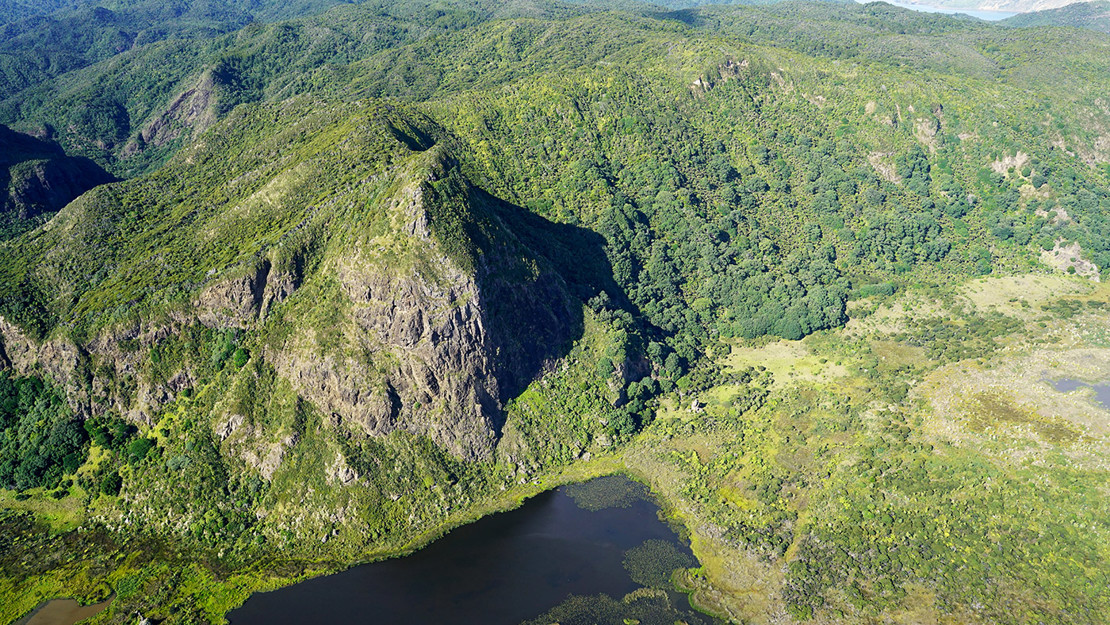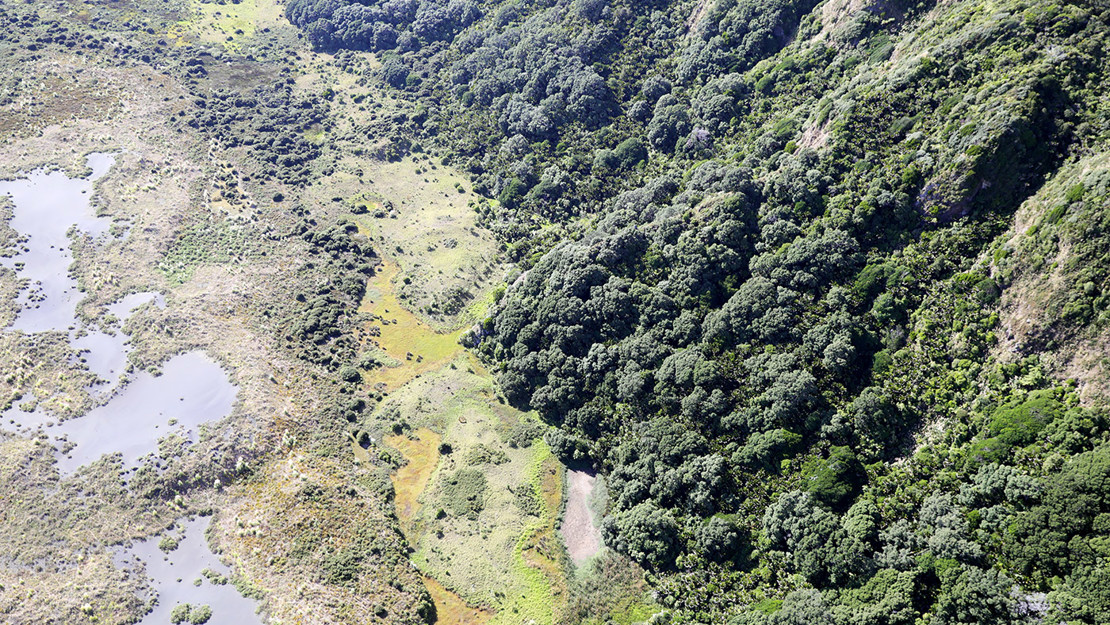Whatipū Coastal Forest
Size: 101 hectares
Site description
The Whatipū Coastal Forest biodiversity focus area is within the Waitākere Ranges Regional Park and includes some of the best coastal forest on Tāmaki Makaurau / Auckland’s west coast.
This area covers the coastal cliffs and hillslopes from Cowan Point (south of Karekare) to Whatipū. The vegetation forms a strip between the extensive Whatipū sand dunes and the inland forest-clad areas of the Waitākere Ranges.

Vegetation
The coastal forest (WF4) is mature and in very good condition. Large pōhutukawa are dominant in the canopy. Other canopy species include:
- pūriri
- kōwhai
- karaka
- nīkau.
Beneath the forest canopy, the vegetation is healthy and diverse. Some of the more common species include kawakawa, rangiora, pōhuehue and coastal astelia.
Flax is dominant in steeper areas (CL1) with occasional pōhutukawa, whau, west coast kōwhai, cabbage tree and other native shrubs.
Veronica obtusata, a coastal hebe species, is found on sparsely vegetated steep slopes and banks, in low windswept scrub and on rock stacks. This species has a restricted distribution – mostly from Muriwai to Whatipū and also at Kawhia. It has a threat status of At Risk - Naturally Uncommon.

Habitat values
The coastal vegetation supports populations of native lizard and forest birds. The pōhutukawa and flaxland provide excellent nectar sources for tūī and other nectar feeding birds during flowering.
Along this coastline, there are nesting kororā (little penguin) and ōi (grey-faced petrel) on the headlands.
Management
Pest plants are managed here by Auckland Council and pest plant abundances are relatively low, although pampas on the cliffs is an ongoing challenge to manage.



